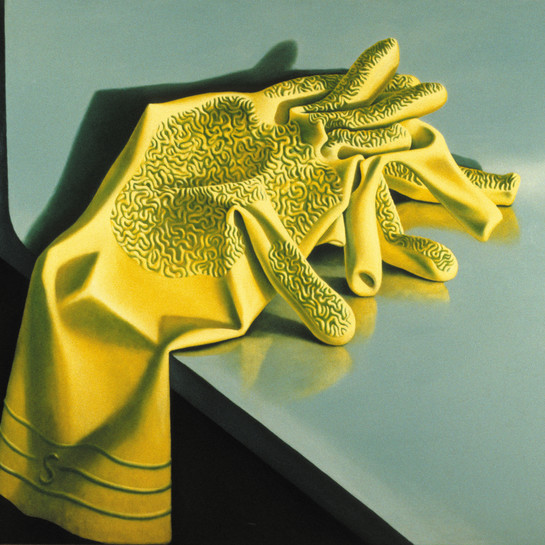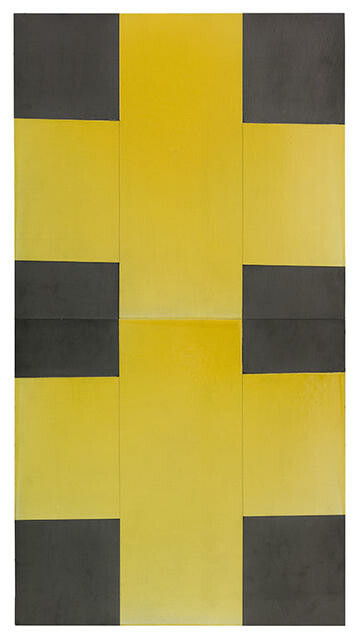Stephen Bambury
Aotearoa New Zealand, b.1951
"Lines may be employed"
- 1991
- resin and graphite on two aluminium panels
- Purchased, 1994
- Reproduced with permission
- 605 x 655mm
- 94/32:1-2
Tags: abstraction, crosses (motifs)
For the exhibition Yellow Moon: He Marama Kōwhai (28 October 2017 – 28 October 2018) this work was displayed with the following label:
The word abstract can relate to ideas or things that are difficult to understand. It can also mean a particular kind of art, focused on shape, colour, line or geometrical form, without an obvious subject. Abstraction can mean being lost in thought – reflecting, contemplating or even daydreaming. That’s not something we’re often asked to do, but it’s what this work seems to invite. Stephen Bambury made this with simple materials: two squares of aluminium metal, varnish-like resin and graphite (what pencil leads are made of). Its materials and surfaces play against each other – glowing gold and shimmering dark – each reflecting light in different ways.
Exhibition History
Ape To Zip: Adventures in Alphabet Art, 13 May 2005 – 8 October 2006
In the exhibition Ape to Zip this work was used for the letter Y and was displayed with the following label: YELLOW The yellow parts of this painting are bright and shining like beeswax or honey. The darker parts are like the surface of a rock. Is this two yellow crosses or six black squares?
2003 label
The title for this work refers to direct quotations from the writings of Mondrian and Malevich. His reduction of the forms to a simple off centre cross surrounded by squares or rectangles puts considerable emphasis on the visual disequilibrium or sense of suspended balance. We are invited to consider these abstract forms as absolute realities in their own right without symbolism or outside references. While the two simple colours used in this work may remind us of McCahon, this artist brings a new focus to the coloured surface. The honey coloured areas are created from thick layers of polymer varnish and the black zones from graphite. On the flat aluminium sheet they create new surfaces with a unique contract or tension between them.


